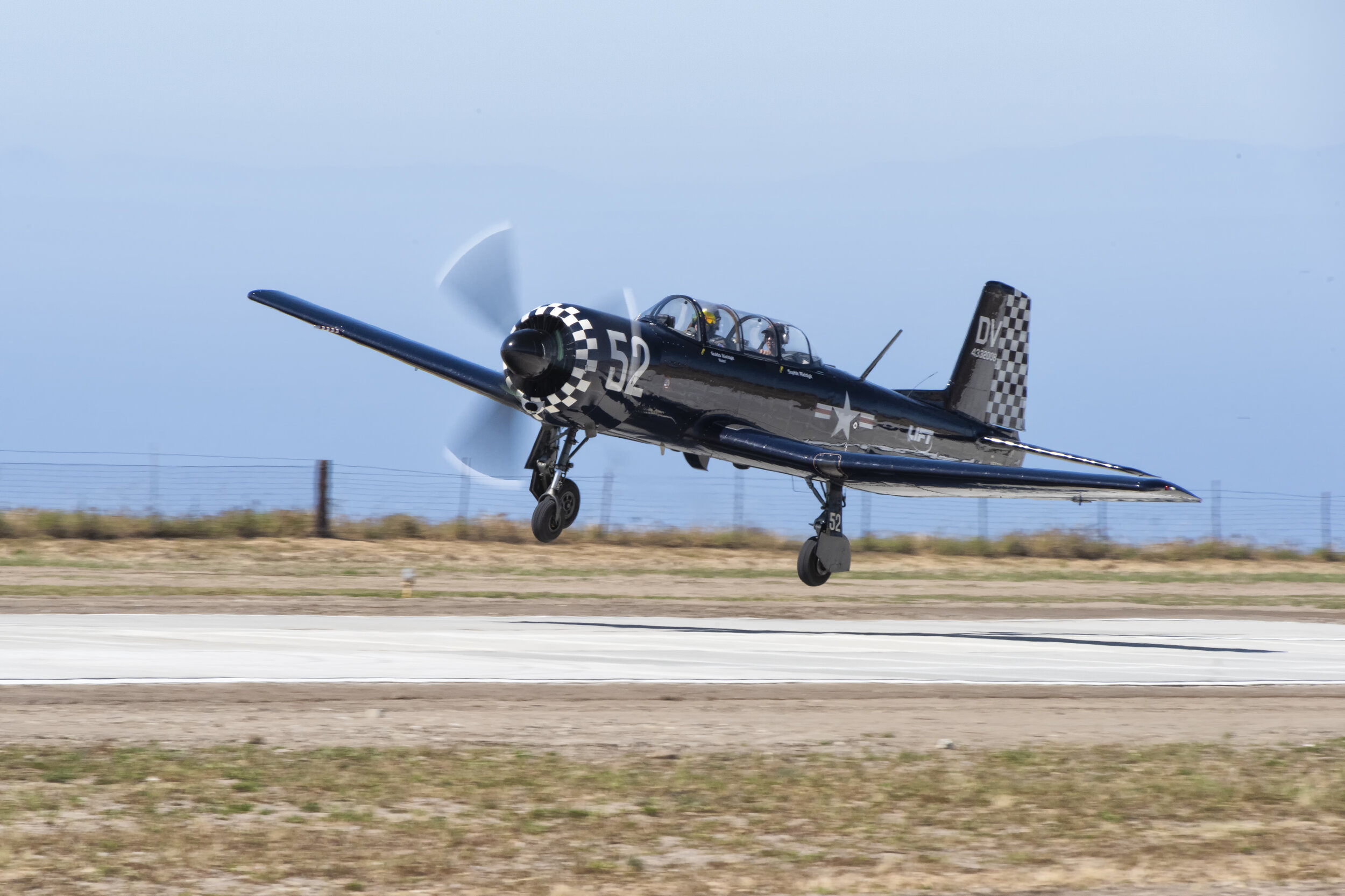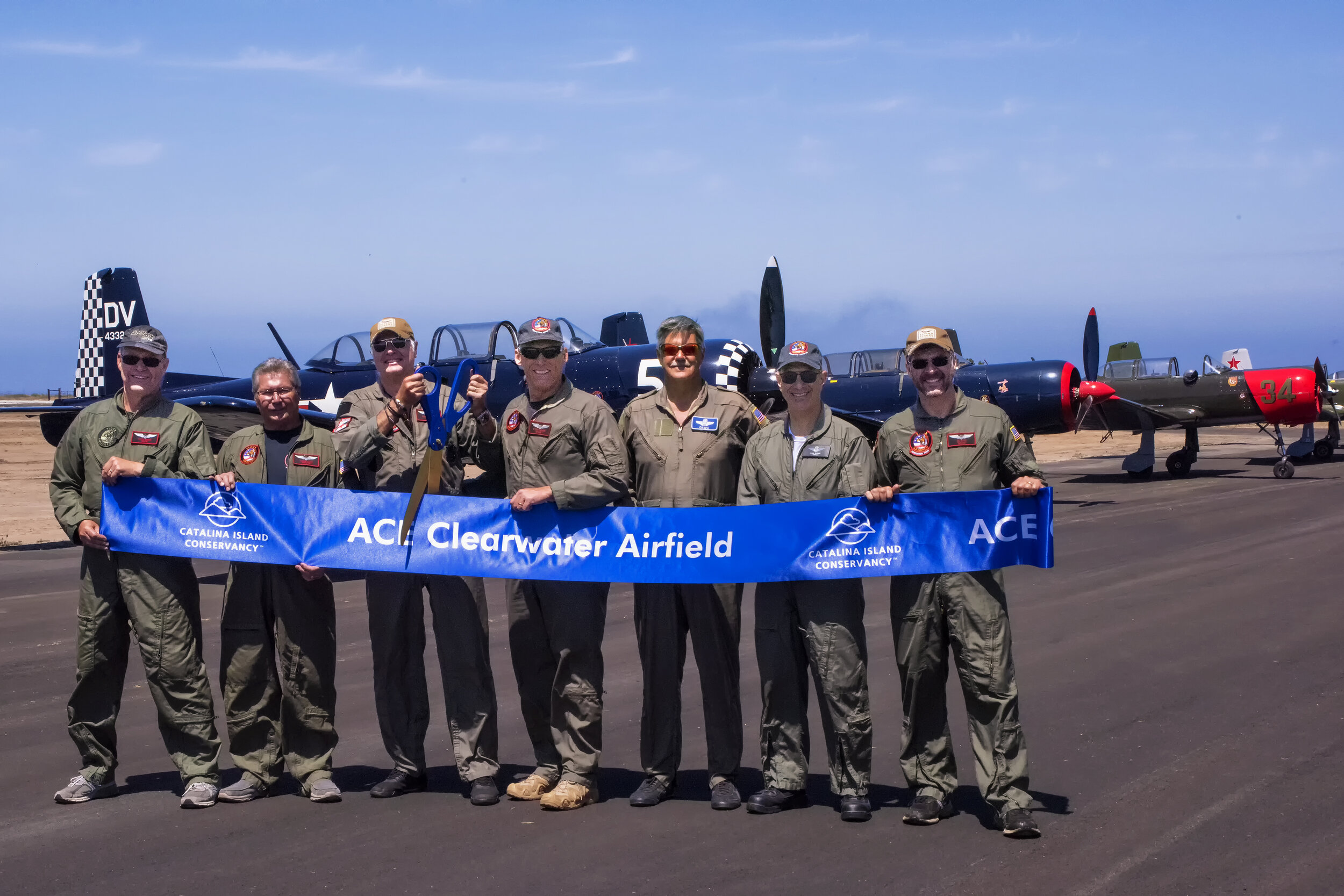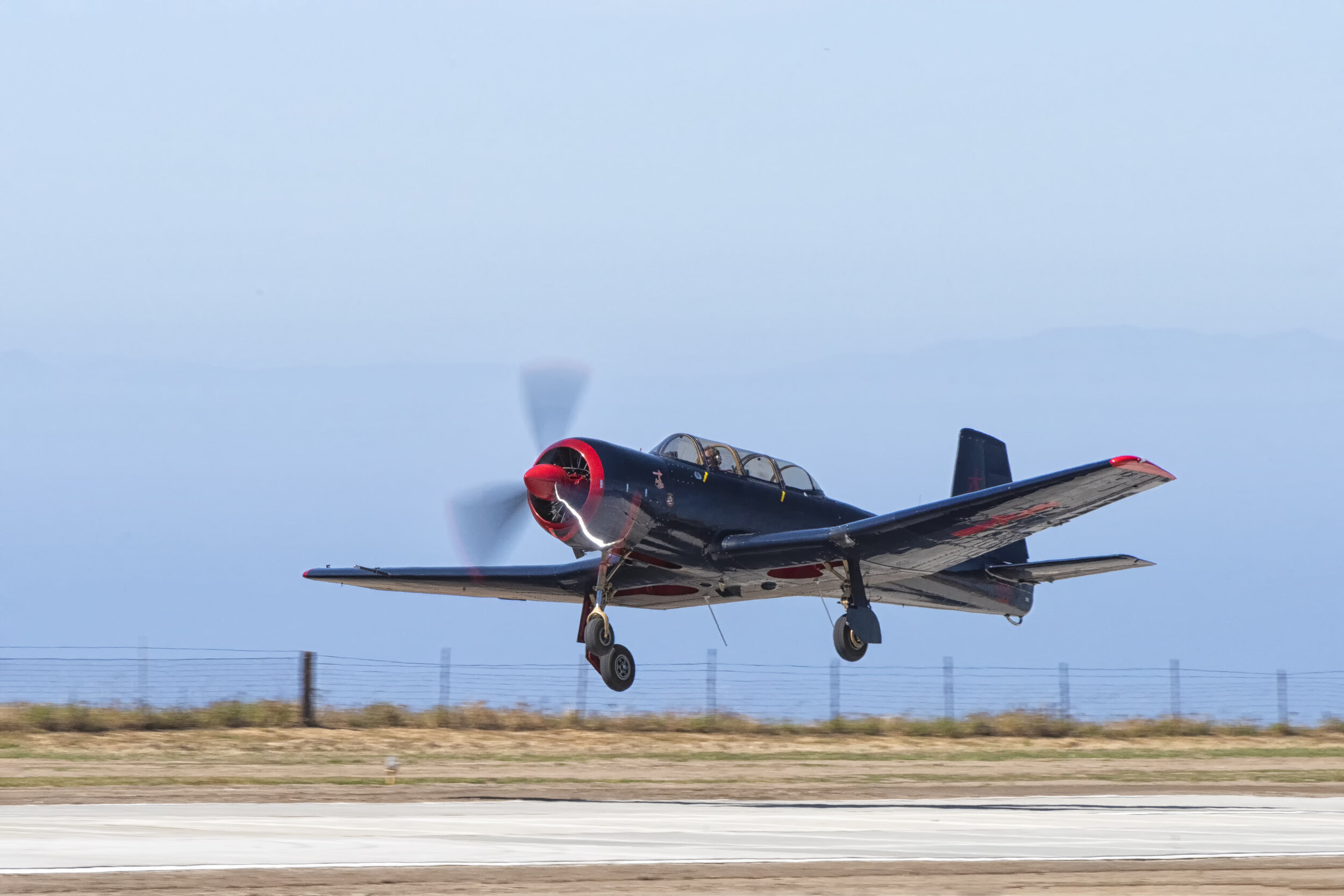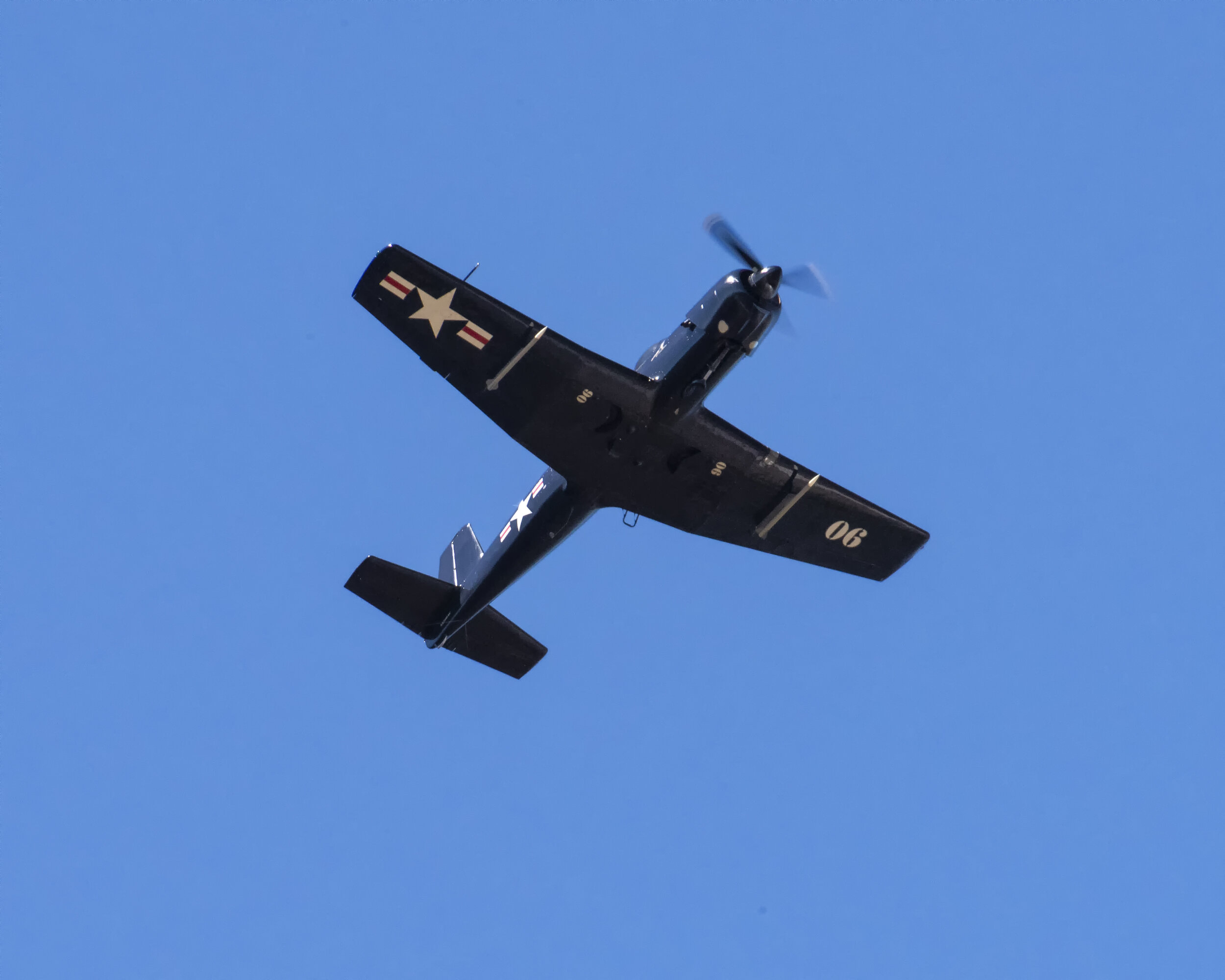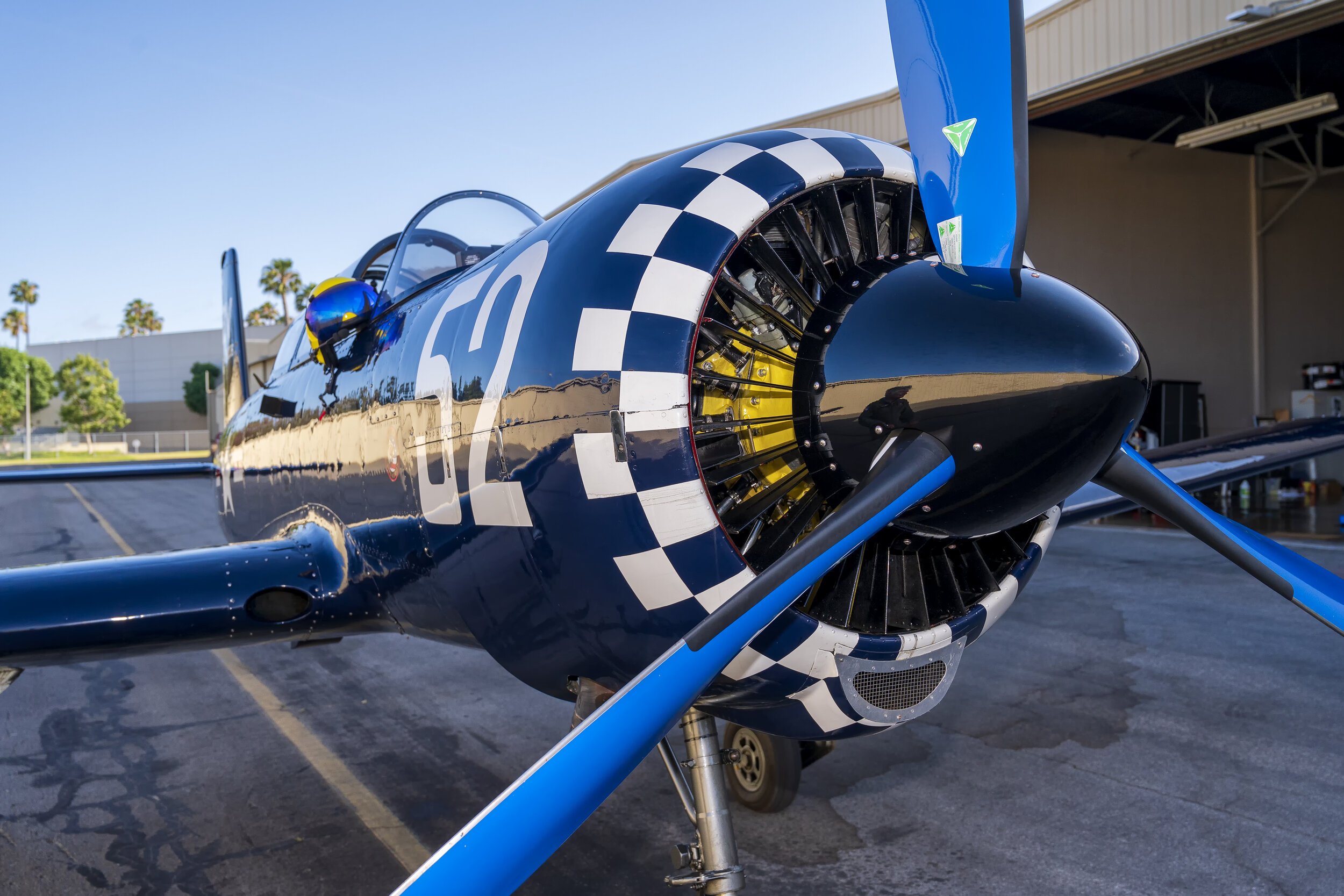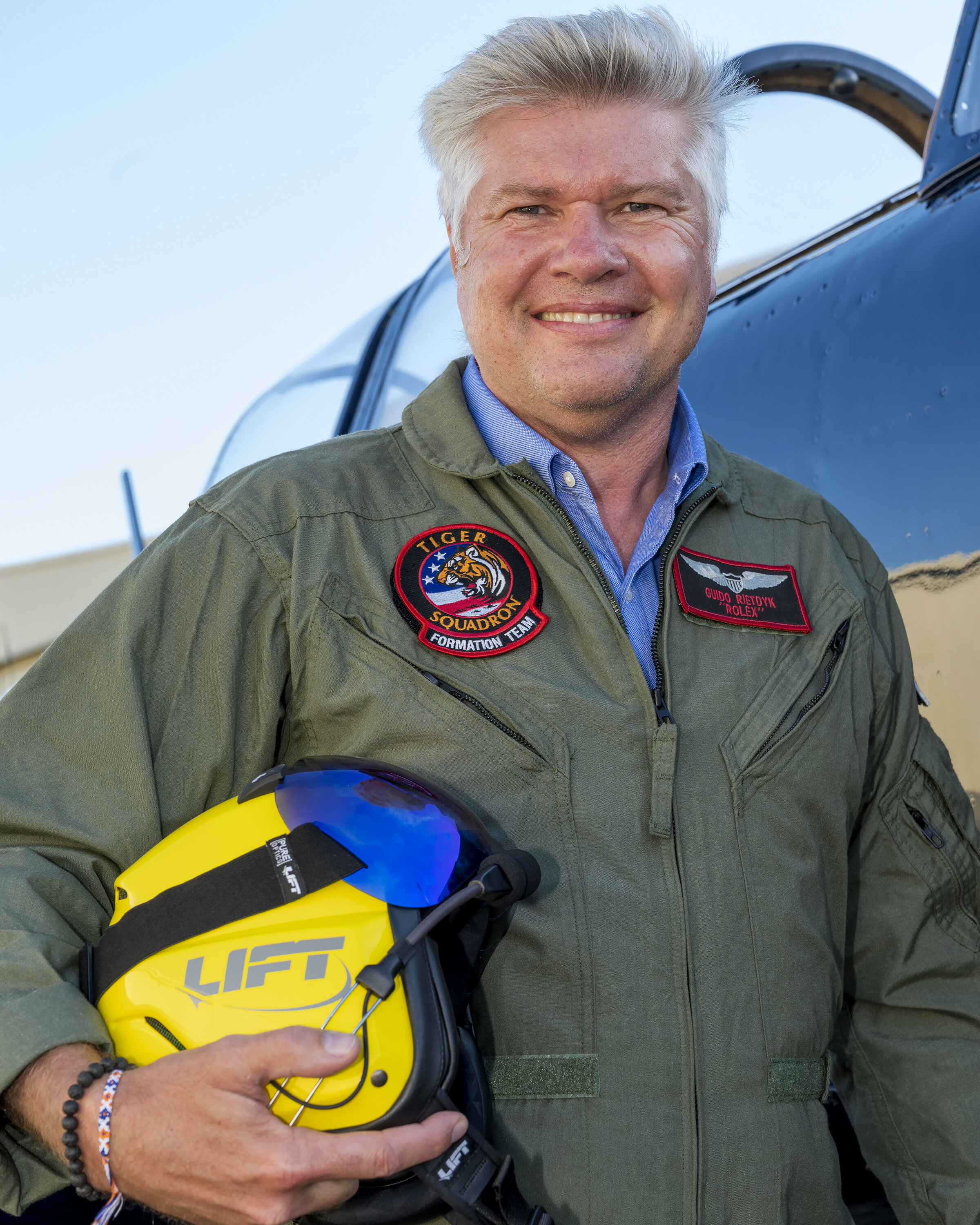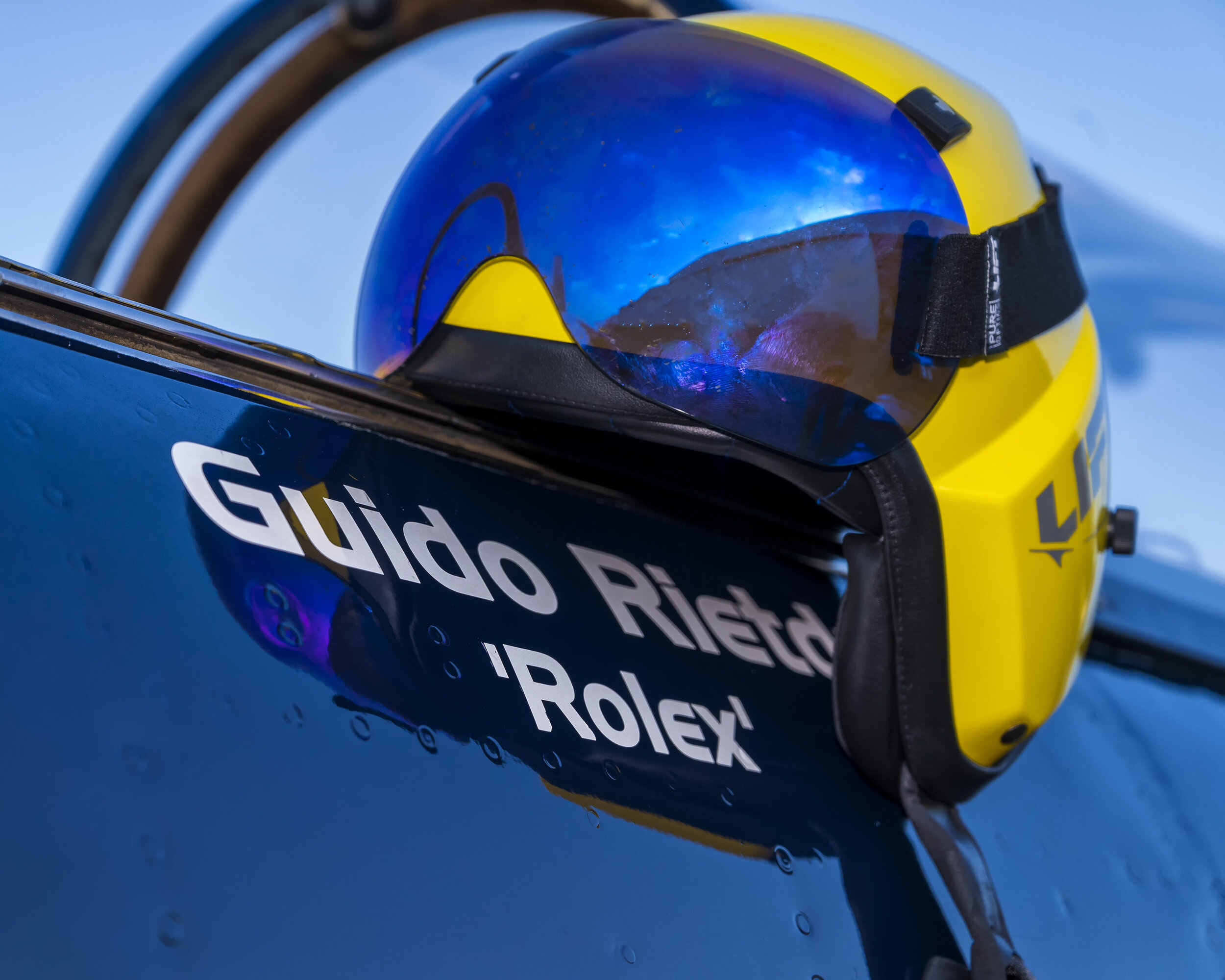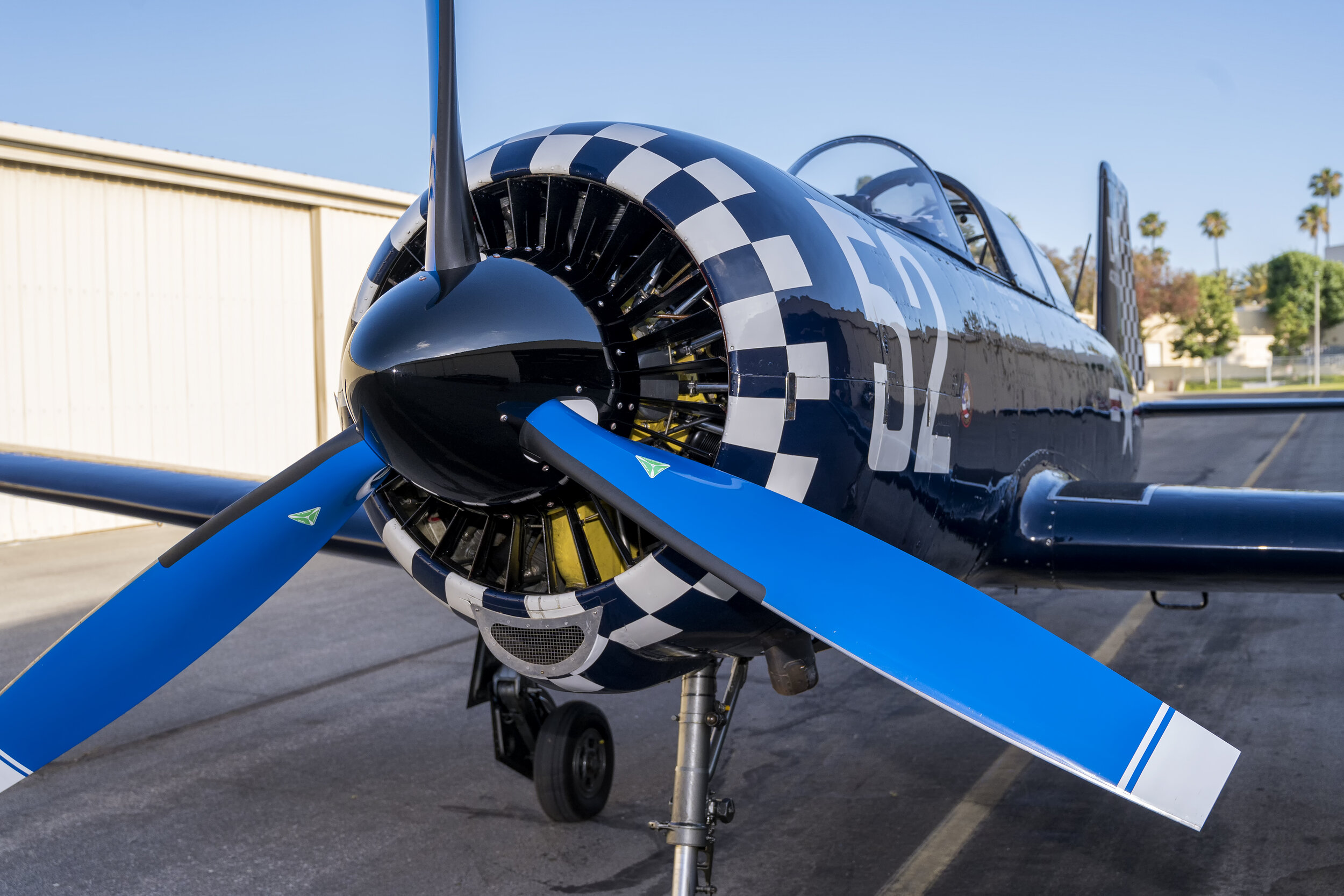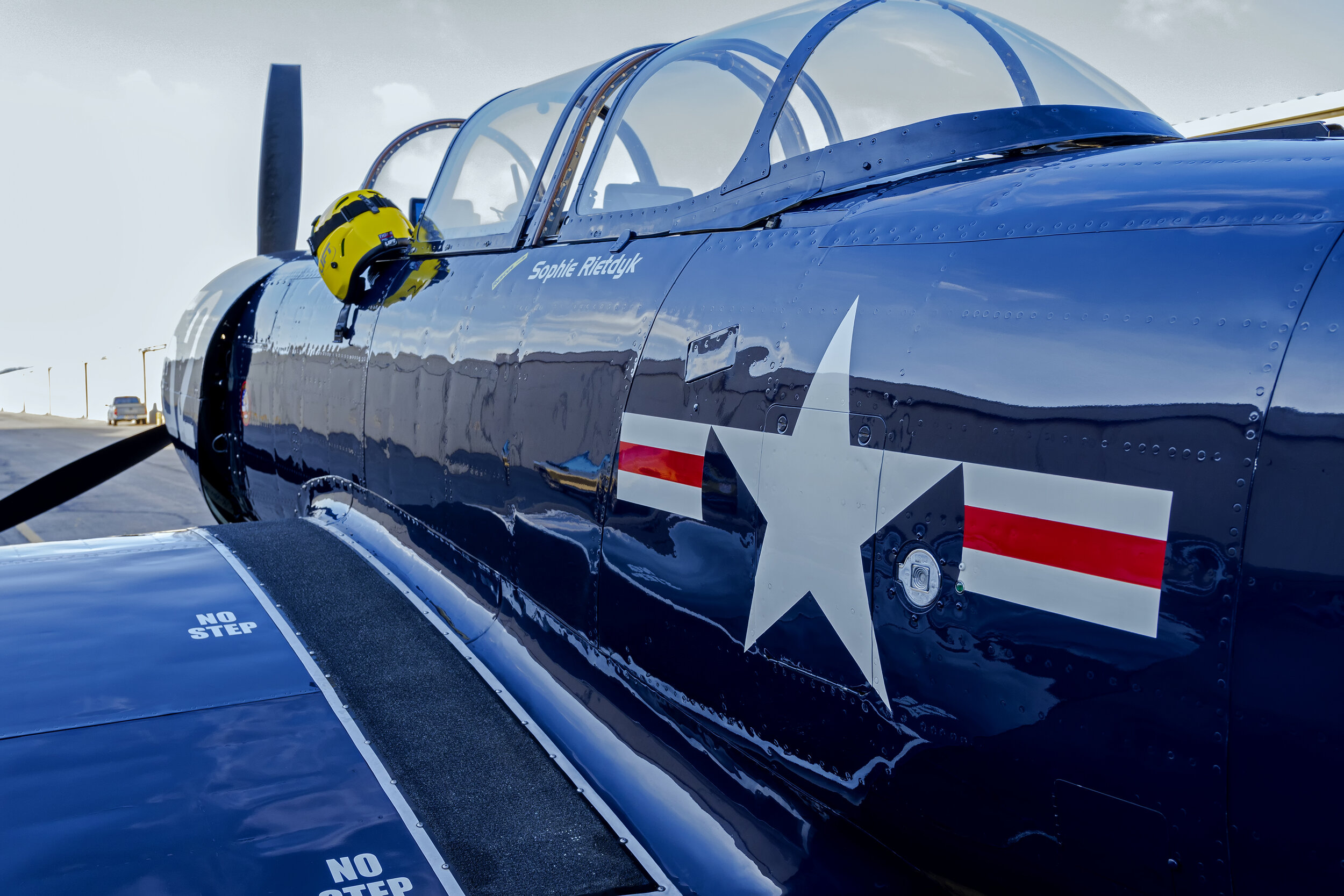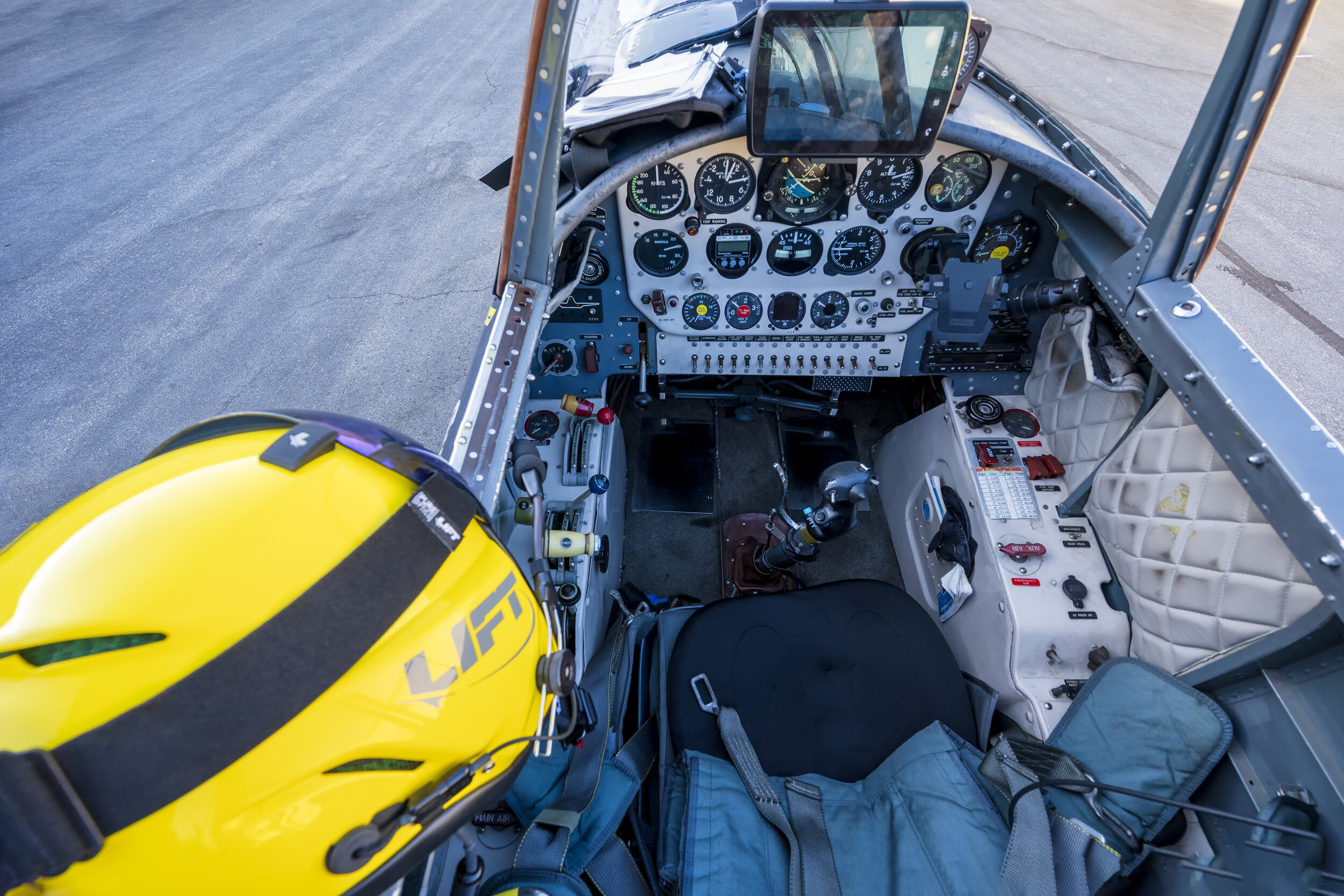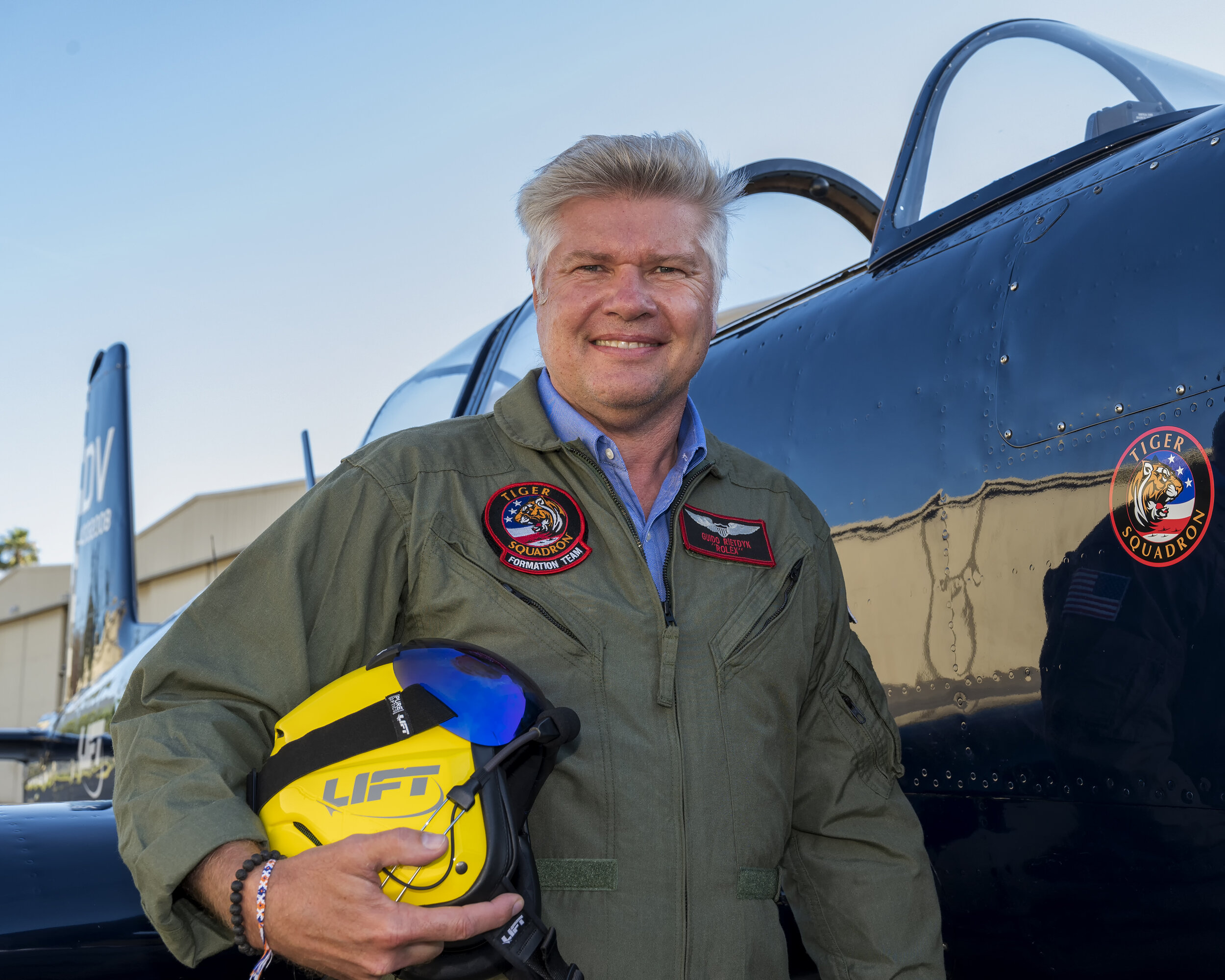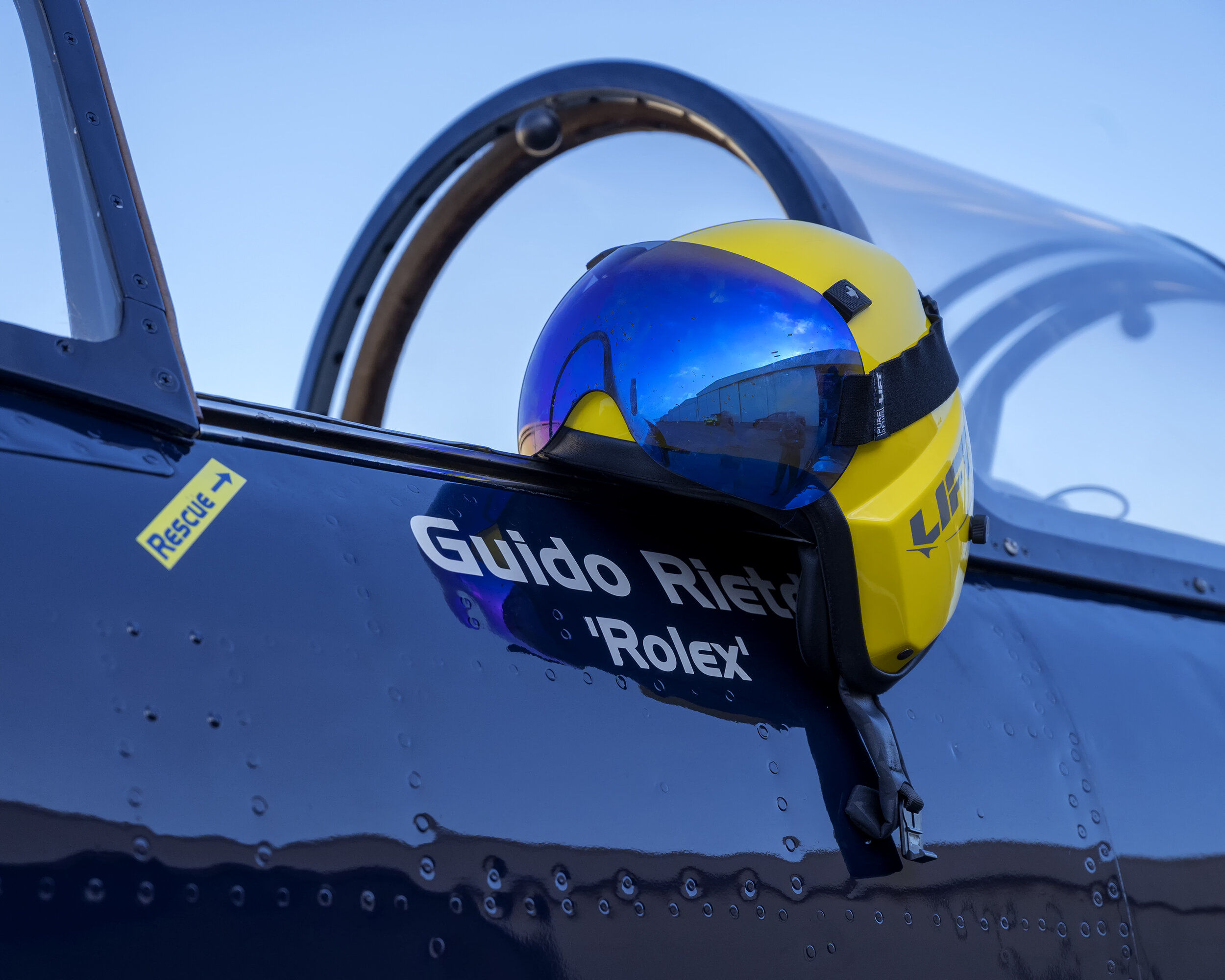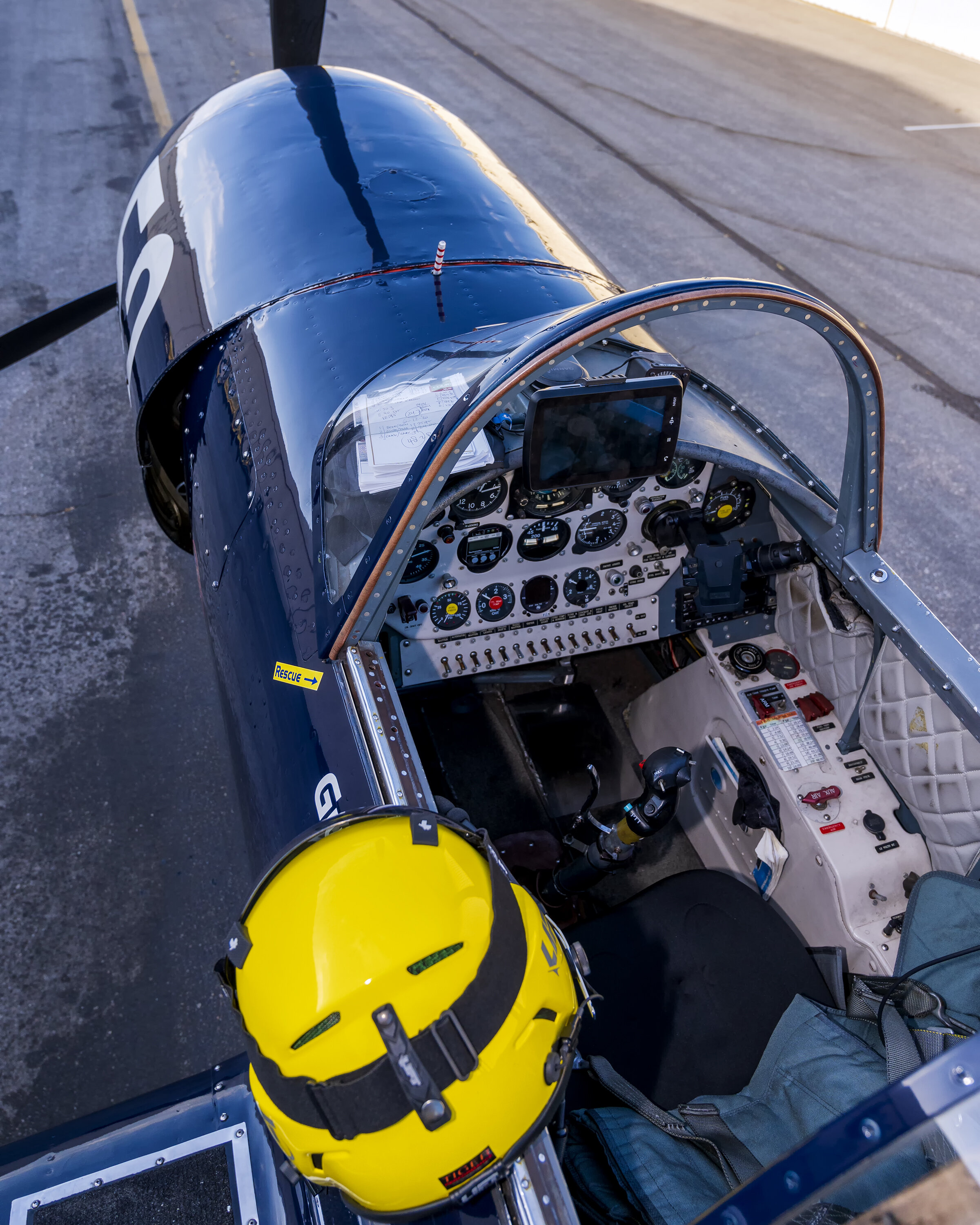Come Fly with Me, Let’s Fly, Let’s Fly Away By Steve Tabor
Come Fly with Me, Let’s Fly, Let’s Fly Away
By Steve Tabor
Over the past month, South Bay residents have been treated to flyovers by U.S. Air Force’s Thunderbirds and a variety of civilian and former military aircraft. One of the groups participating in these flying tributes to our heroes has been the Torrance based aerobatic team the “Tiger Squadron”!
The Tiger Squadron specializes in formation requires a great deal of concentration and focus as pilots fly in close proximity to one another. Guido Rietdyk, a Tiger Squadron pilot somewhat understatedly says, “Like the Blue Angels and Thunderbirds we do our best not to swap paint. We’re equally careful to keep the number of take-offs and landings equal.” Every pilot is focused on maintaining their respective position in the formation and monitoring their speed and altitude, and each knows the positions of the other planes and the pending movements of the formation. An important component to formation flying is the “Formation Manual.” The Manual documents in great detail each plane’s position speed, maneuvers and the protocols for that particular formation. Rietdyk reports, “The Tigers maintain a record of no mid-air contacts throughout their flying a history.”
Pre-flight planning is the key to any flight, much of it depends on the complexity of the event. Flyovers for NFL or NCAA events can involve flying in restricted air space. For those events, the FAA and TSA are included in discussions well before any discussions happen with event organizers. Meeting between the organizers and the Lead Pilot focus on the timing and specifics of the event. After those details have been developed the Lead Pilot will prepare a flight plan that becomes part of the Flight Briefing for the participating pilots. The flight briefing includes details of where the flight will take place, the route of the flight, radio frequencies used during the flight and the details of the formation that will be flown. Pilot and spectator safety is always a primary consideration from take-off to landing.
The Tigers fly three to four times a week practicing their group configurations. Some of their flight formations are composed of 10 aircraft. “Formation flying is a muscle memory skill set that when not properly exercised simply dulls and goes away.” Rietdyk goes on to say, “Given the high intensity of the activity it is extremely important to maintain our skill levels as high as possible.” The Tigers log most of their practice time in the air space between the Palos Verdes Peninsula and Santa Catalina Island because of its FAA designation as an aerobatic practice space.
On the day of an event, a Forward Air Controller (FAC) plays an vital role the successful completion of the flight. Following procedures similar to those used by U.S. Air Force, the FAC advises the pilots about all relevant details and conditions at the “target” and “calls-in” the flight at the proper time. The Tiger’s FAC has a strong military background in these procedures and the role of the FAC.
Although flyovers demand a high degree of focus, Rietdyk points out that flyovers for fallen heroes can be quite emotional. “We fly a routine called the Missing Man, which symbolizes the loss and departure of one the members of an organization. It never leaves a dry eye on the ground and it is incredibly meaningful and a great honor to fly.” Rietdyk continues, “Personally, flying for the Ronald Reagan Presidential Library is the greatest honor of my life. As an immigrant, I felt my first flight over the Library was an opportunity to finally be able to truly repay my debts to this wonderful country and the people that I’d be so privileged to call home. It was an emotional moment and one I will always cherish!”
Besides formation flying, the Tigers participate in Dog Fighting and 1980’s style Red Flag warfare missions. Rietdyk reports, “These are national competitions. We have not lost a competition in years.” A small number of Tigers also participate in Formation Aerobatics using their YAK 50 aircraft.
Twelve male and female active pilots comprise the Tiger Squadron. Some are ex-military pilots; others only have civilian flying experience. Rietdyk reveals, “They usually get drawn in by going for a passenger ride and experiencing the entire process from the Pre-Flight Briefing to the Post Flight Debriefing.” He goes on to say, “The Squadron does not fish with barbed hooks, so most qualified prospects fall head over heels with the experience and crave more. For some it results in an apprenticeship which leads to flight training. Some candidates have not thought that they would become a pilot but caught the bug and jumped in with both feet!” Each pilot is required to have a Private Pilot License (PPL) with additional signoffs for High Performance and Complex (retractable landing gear) aircraft.
The Tigers are self-funded using their proceeds from flyovers and other events and their own pocketbooks to pay for their aircrafts’ maintenance, equipment, fuel and other expenses related to their flights. As a result, the choice of aircraft they fly is an important decision. The Tigers’ fleet is comprised of a combination of Chinese CJ-6A aircraft and a variety of YAK aircraft. Rietdyk says “The CJ-6A’s are ideal of formation flying. They are comparatively inexpensive to acquire and operate. They have a comfortable cockpit and are very reliable. The YAK aircraft are a better aerobatic performer but is a slower aircraft and is its smaller interior makes it a bit less comfortable.”
With respect to the amounts of monies required to keep their machines in flying condition as well as the amount of time invested in training and the risk to their own personal safety, I wondered why Rietdyk and his fellow pilots continue to dedicate themselves to this endeavor. Rietdyk sums up it, “Tigers simply love flying, the skills it requires and comradery. We do get occasional push-back from people on our flying activities, like the noise we generate, which we regret. Certainly, our flying is meant to empower and motivate folks and instill a sense of pride in our flag and country.”
Steve Tabor Bio
This South Bay native’s photographic journey began after receiving his first 35 mm film camera upon earning his Bachelor of Arts degree. Steve began with photographing coastal landscapes and marine life. As a classroom teacher he used photography to share the world and his experiences with his students. Steve has expanded his photographic talents to include portraits and group photography, special event photography as well as live performance and athletics. Steve serves as a volunteer ranger for the Catalina Island Conservancy and uses this opportunity to document the flora and fauna of the island’s interior as well as photograph special events and activities.
Watch for Steve Tabor Images on the worldwide web.


